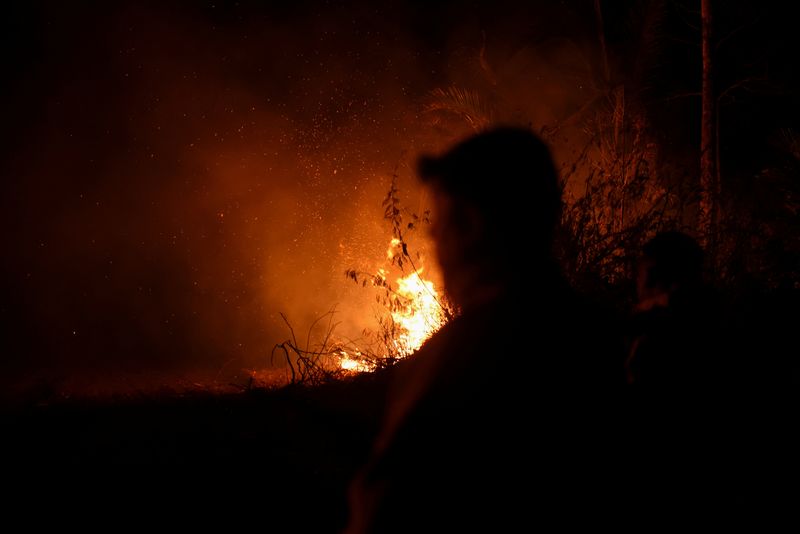
By Santiago Limachi and Daniel Ramos
SANTA CRUZ, Bolivia/LA PAZ, (Reuters) – In the lowland Bolivian region of Santa Cruz, being gripped by some of its worst wildfires on record, nurse Raúl Gutiérrez said that the acrid sting of smoke almost never goes away and day has started to look almost like night.
The South American country is on track for potentially a record year of fires, exacerbated by drought and land clearances linked to booming production of cattle and grains, especially around the wealthy farm city of Santa Cruz.
While the fires have been raging for weeks, in recent days the smoke over cities like Santa Cruz and Cochabamba has worsened, with images showing city monuments shrouded by the smog. The air pollution reading on Wednesday was among the worst in the world.
“The smoke is persistent, it is strong. We hope it dissipates but there are no signs or chances of rain,” said Gutiérrez, adding it was worst at dusk, dawn and midnight.
He added that increasing numbers of people were having breathing problems, eye issues and headaches due to the smoke, while school classes had been suspended.
“The sun practically has an orange hue, it looks just like the moon at night,” he said.
Breathing in pollution from wildfire smoke can be deadly or lead to long-term breathing problems, with a June study in the journal Science Advances finding that it had lead to at least 52,000 premature deaths in California alone over a decade.
Satellite images show alarming levels of particulate matter and carbon monoxide in the air. And data from Brazilian official body INPE shows Bolivia potentially on track for its worst number of active fires on record for the month of September.
‘THE AMAZON IS BURNING’
Diego Rojas, head of the Department of Water and Atmospheric Pollution at Santa Cruz City Hall, said that people should avoid outdoor activities and use face masks against the smog.
“We’ve had five straight days with dangerous levels for the population,” he said.
The fires have forced schools to close and some commercial flights to be suspended. President Luis Arce has called for international aid and said the government “will not stop” until the fires have been extinguished.
Wilber Melgar, from an Indigenous community in the region of Beni to the north of Santa Cruz that has also been hard hit by the fire, blamed ranchers for clearing large areas of land for grazing, at times with slash and burn methods.
“Right now the Amazon (NASDAQ:AMZN) is burning,” he said.
Neighboring Brazil is also suffering a torrid beginning to the fire season, with blazes leaving major cities cloaked in smoke and huge swathes of Amazon rainforest there in flames. The wider region is seeing the worst fires since 2010.

In Bolivia, Santa Cruz has seen deforestation of some 8 million hectares (19.8 million acres) over the last 20 years, said Alcides Vadillo, a researcher at the Tierra Foundation, leading to more fires.
“(Last year) Santa Cruz was the most polluted city on the planet for a week. This year it will happen again and that means direct damage to human health,” said Vadillo.
This post is originally published on INVESTING.



